When the celebrated British General, James Wolfe, launched a surprise attack up the steep cliffs that lead into Quebec City’s Plains of Abraham, the opposing French forces were instantaneously overwhelmed. They had assumed that the rocky, densely vegetated cliffs looming over the St. Lawrence River would serve as a natural fortification of sorts, preventing any foolhardy British attack. But in these majestic cliffs, General Wolfe had noted weakness. If only his soldiers could scale their heights, in the early morning hours, they would be met with little or no resistance.
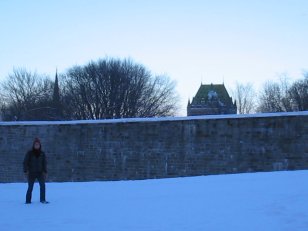
The attack, of course, proved a famous military success, and cemented a place for the Plains of Abraham in military legend and history books worldwide. This renown also helped establish the Plains as Canada’s first national urban park, as well as one of the most prestigious city parks in the world.
Today there are no longer soldiers marching stiffly through the Plains, but rather cross-country skiers enjoying over fifteen kilometers of groomed trails, rock climbers bouldering on the stony ramparts, runners weaving their way through a web of nature trails, and ultimate frisbee players taking advantage of vast green fields.
As an itinerant resident of Quebec City, I’ve had the opportunity to explore the Plains in all seasons while engaged in virtually every leisure activity and sport imaginable. And while it is indeed pleasant to sit under the canopy of Elm trees sipping red wine, munching on a baguette and playing chess, I’ve learned over the years that it is snowshoeing, rather than chess or mountain biking, that allows me to come into the most intimate contact with my favorite sections of the park.
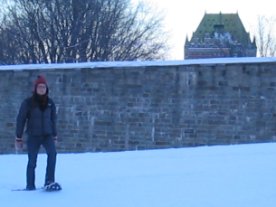
This year, when Quebec City was blanketed by a magnificent snowstorm the day after Christmas, I left my girlfriend’s apartment in the Old City determined to circumnavigate all 108 hectares of the Plains before a much-anticipated dinner of pot roast leftovers. Albeit an ambitious trek, I had plenty of calories to burn off from weeks of gorging, and was eager to spend Boxing Day, as they call it here, away from the frenzy of post-Christmas shopping.
As always, I donned my snowshoes at the entrance to the Joan of Arc Garden and looked out over the windswept Plains. Though typically swarming with sledders, skiers, snowshoers, and strolling couples, I was surprised to see the wind sweeping over a snowscape nearly void of humanity. Quebec culture is a winter culture, and it generally requires more than frigid temperatures and gusting winds to keep Quebecois inside. But it was 8:00 a.m. the day after Christmas, the thermostat read –14º Celsius, and a steady blast of arctic wind blew off the St. Lawrence River. For at least an hour or two, I’d have the Plains to myself.
From the Joan of Arc Garden, I cut across a large field peppered with gentle hillocks and headed straight for the woods where I was sure to find brief respite from the wind. Along the way I passed the Martello Tower, a foreboding stone structure once used to store munitions. I paused at the base of the tower to take a drink from my thermos, then made a precipitous descent down a hill that is the proving grounds for many ambitious young sledders.
When I finally bushwhacked my way into the woods, the wind eased dramatically, the morning sun sparkled on waves of snow, and I felt that unique sense of solitude that one can only feel in the woods. Even on days when the Plains are jammed with people, this small section of deciduous forest is rarely visited. Several nature paths wind through the forest, but most park-goers tend to explore the more sensational upper reaches of the Plains.
Personally, however, what I find sensational is to snowshoe through a forest where one of North America’s most consequential battles unraveled. Once the British forces scaled the cliffs and entered these woods, they proceeded to charge a French guard station, only to find most of the soldiers asleep. Though an insignificant battle in terms of bloodshed, this attack allowed the British access to the most strategic part of Quebec. If the French had succeeded in repelling the British from these woods, it is possible that today you would be reading this article in Française instead of in English. But that’s another story.
I emerged from my historical fantasy in the woods to find that wind had abated only slightly. A gritty, deep snow—70 centimeters, I would later learn—drove at my back and helped push me up toward the Visitor’s Center, a kiosk on the edge of the cliffs that overlooks the stunning immensity of the St. Lawrence River. I paused here for a minute and studied the large ice floes forming since late-November. Though one of the most important waterways in North America, the St. Lawrence River is also one of the most dangerous to navigate, especially in mid-winter when thick masses of ice collide and meld and create a beautifully surreal surface of a thousand abstract ice sculptures.
From the Visitor’s Center, I ran and leapt through the thick snow of another steep hill and found myself on the edge of Quebec City’s legendary Winter Carnival site. Typically lasting three weeks, from late-January to mid-February, the Winter Carnival is a manifestation of the Quebecois joie de vivre. Despite the chilly temperatures, thousands of people congregate on the Plains during these weeks to see the international ice sculpture contest, dance to local Quebecois music, eat maple syrup snow cones, and get outrageously drunk on a traditional drink called Caribou. And you can even show up in your snowshoes!
I noticed several cross-country skiers in the distance when I began the gradual ascent out of the Carnival grounds. They had stopped by one of the many historic canons that are sprinkled throughout the Plains, and were taking a photo of the Château Frontenac, whose breathtaking green towers and spires punctuated the horizon. The Château is one of North America’s oldest and most prestigious hotels, the star of many films (including I Confess by Hitchcock, a must see!), and perhaps one of the most dramatically positioned buildings anywhere in the world. Indeed, it makes a fine backdrop for a snowshoeing jaunt.
At around 2:00 p.m., when the sun dropped behind an oncoming mass of white clouds, I decided that my legs were tired and my face was frozen to the point of brittleness. I’d covered nearly three-quarters of the Plains, and will have to leave my exploration of the cannon-studded Battlefield Park for another, hopefully warmer, day.
For now, though, I’m quite content with the snowshoe tracks I’ve left in the virgin snow, and even more content to go back to an apartment where I can gorge again on Christmas food and earn myself another snowshoe excursion sometime soon.
À la prochaine!
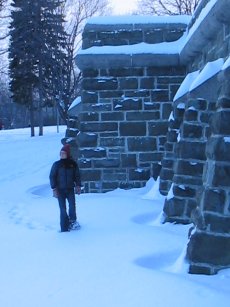

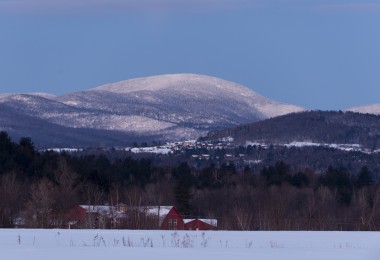
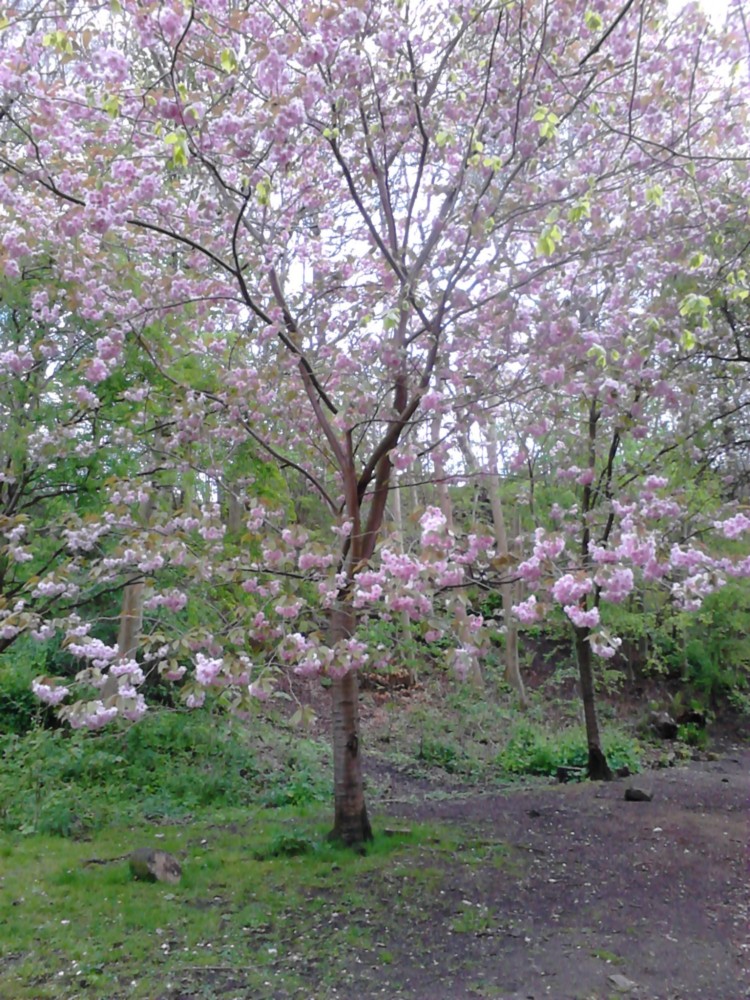
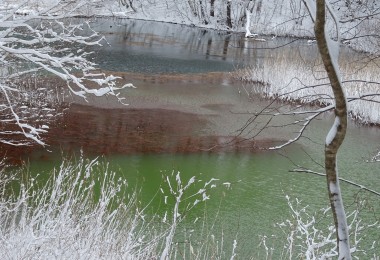
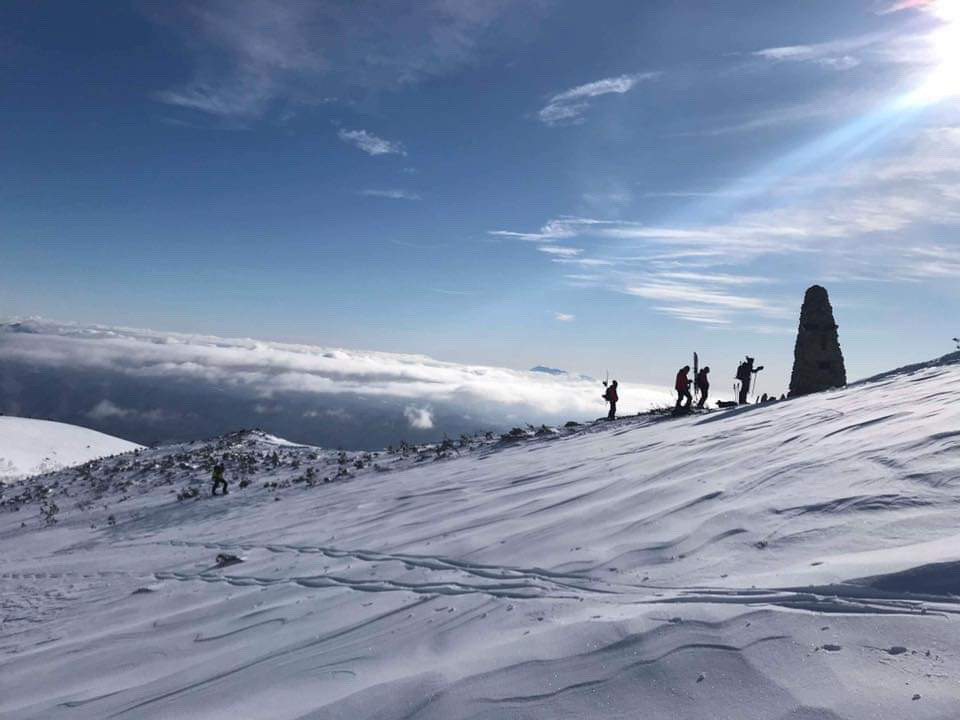

Leave a Comment